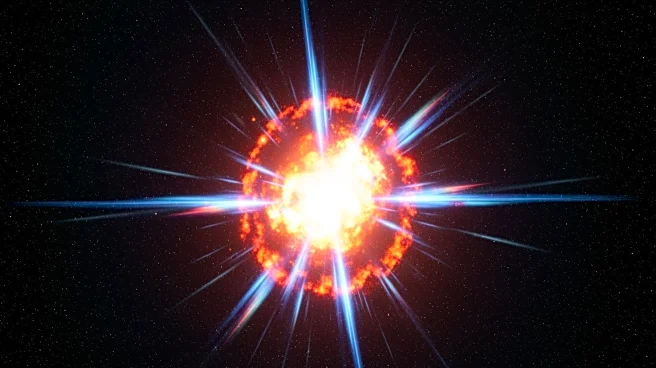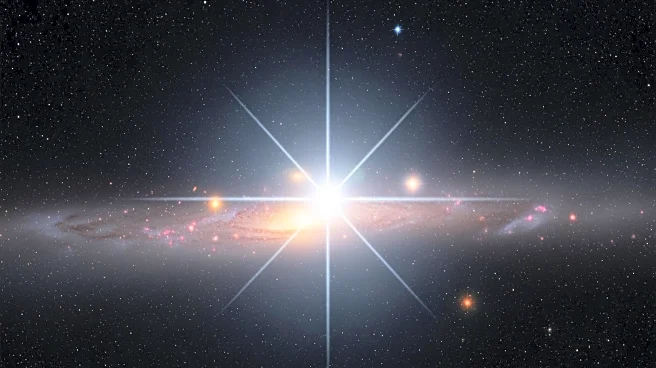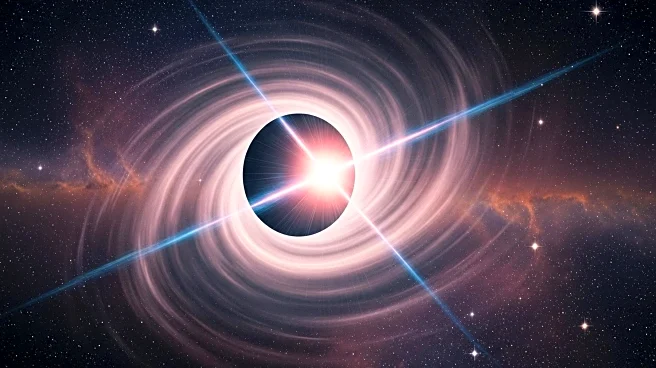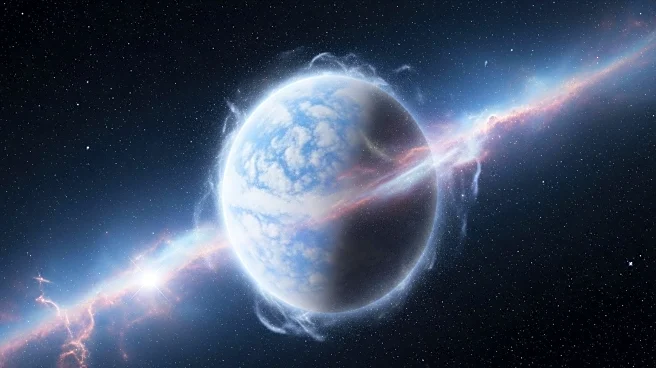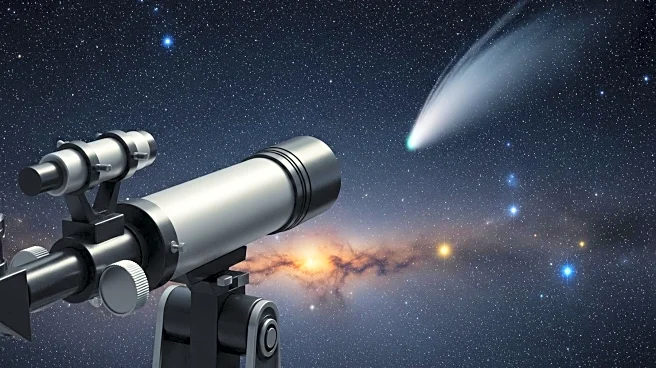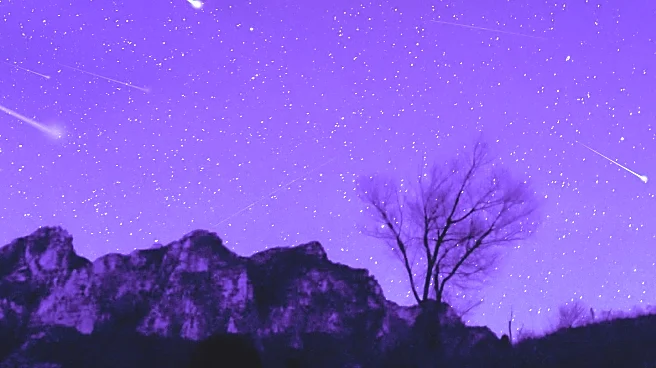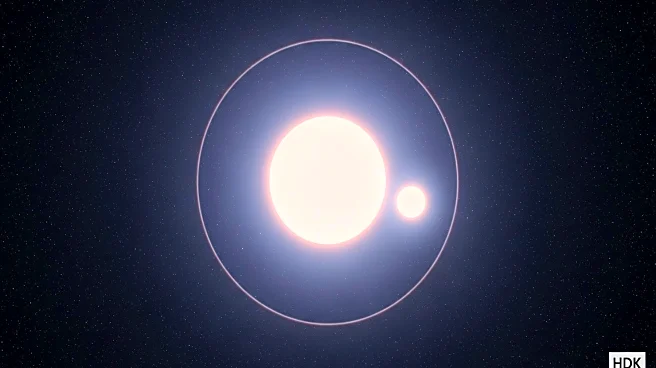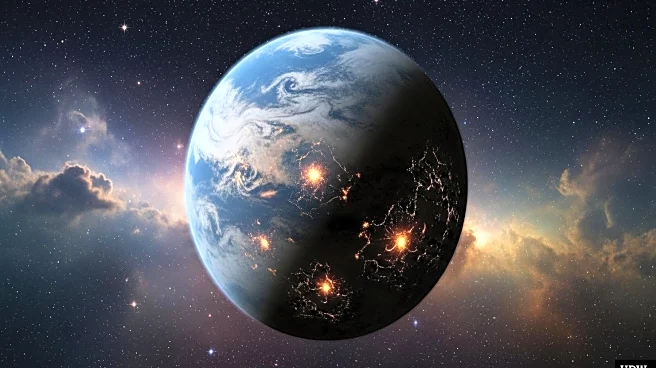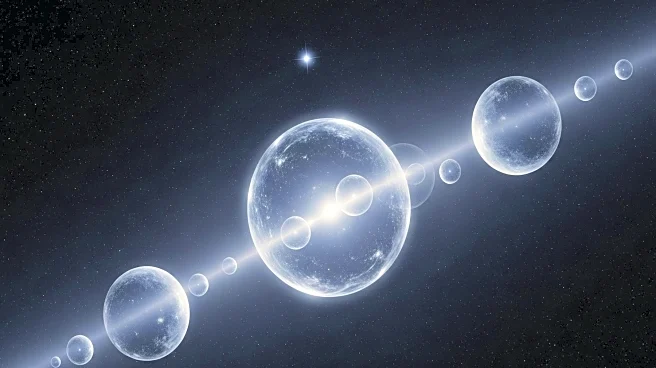What's Happening?
Astronomers have recorded the longest gamma-ray burst ever observed, designated as GRB 250702B, which lasted approximately 7 hours. This event was first detected by NASA's Fermi telescope on July 2, 2025.
Unlike typical gamma-ray bursts that occur when a star collapses into a black hole, GRB 250702B is believed to have been caused by a preexisting black hole merging with a partner star, creating jets from deep within. The burst's duration and characteristics are unlike any previously recorded, prompting scientists to explore new theories about its origin. The event's light curve showed rapid flickers, indicating a compact engine, and the burst's spectrum lacked a meaningful delay between hard and soft photons, consistent with ultra-fast jets. Follow-up spectroscopy with the Webb Telescope measured a redshift of 1.036, confirming the burst's distance and energy.
Why It's Important?
The discovery of GRB 250702B challenges existing theories about gamma-ray bursts and their origins. Typically, these bursts are associated with the collapse of massive stars, but the unprecedented duration and characteristics of GRB 250702B suggest a different mechanism may be at play. This finding could lead to a reevaluation of the processes that generate gamma-ray bursts, potentially impacting our understanding of stellar evolution and black hole dynamics. The event's unique features may also provide insights into the conditions required for such ultra-long bursts, influencing future astronomical research and observation strategies. The implications extend to the study of star-forming regions and the environments that favor the occurrence of these rare cosmic events.
What's Next?
Further research and observation are needed to understand the mechanisms behind GRB 250702B. The Rubin Observatory's upcoming sky surveys may help identify similar events and provide more data on ultra-long gamma-ray bursts. Scientists will continue to analyze the burst's characteristics, comparing them with known models to refine theories about gamma-ray burst origins. The study emphasizes the importance of crosschecking data from multiple instruments, including gamma rays, X-rays, and infrared spectra, to build a comprehensive understanding of such phenomena. As more data becomes available, researchers may uncover new pathways for gamma-ray bursts, potentially leading to breakthroughs in astrophysics.
Beyond the Headlines
The discovery of GRB 250702B highlights the complexity and diversity of cosmic events, challenging the notion that gamma-ray bursts are solely the result of star collapses. This event may indicate the presence of previously unknown processes in the universe, prompting scientists to explore alternative explanations for gamma-ray bursts. The study also underscores the importance of international collaboration and advanced technology in expanding our knowledge of the cosmos. As researchers delve deeper into the data, they may uncover new insights into the behavior of black holes and the conditions that lead to such extraordinary cosmic phenomena.
